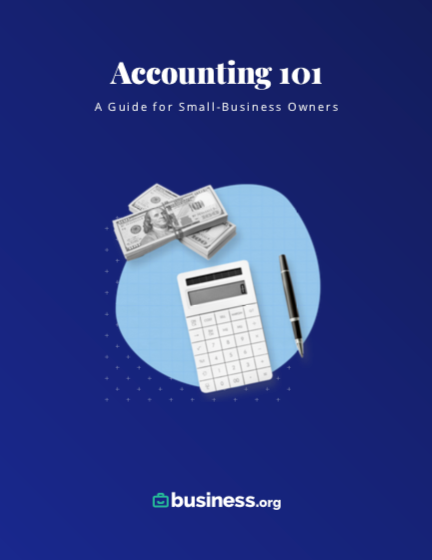We are committed to sharing unbiased reviews. Some of the links on our site are from our partners who compensate us. Read our editorial guidelines and advertising disclosure.
Retained Earnings: Everything You Need to Know for Your Small Business
Retained earnings, at their core, are the portion of a company’s net income that remains after all dividends and distributions to shareholders are paid out.
It can go by other names, such as earned surplus, but whatever you call it, understanding retained earnings is crucial to running a successful business.
We’ll explain everything you need to know about retained earnings, including how to create retained earnings statements quickly and easily with accounting software.
Let’s get started.
What are retained earnings?
Retained earnings refer to the money your company keeps for itself after paying out dividends to shareholders.
Retained earnings act as a reservoir of internal financing you can use to fund growth initiatives, finance capital expenditures, repay debts, or hire new staff.
Positive retained earnings signify financial stability and the ability to reinvest in the company’s growth. This usually gives companies more options to fund expansions and other initiatives without relying on high-interest loans or other debt.
When a company consistently experiences net losses, those losses deplete its retained earnings. Prolonged periods of declining sales, increased expenses, or unsuccessful business ventures can lead to negative retained earnings.
Retained earnings are reported in the shareholders' equity section of a balance sheet.
Retained earnings are also known as accumulated earnings, earned surplus, undistributed profits, or retained income.
By signing up I agree to the Terms of Use and Privacy Policy.
What is a statement of retained earnings?
A statement of retained earnings details the changes in a company's retained earnings balance over a specific period, usually a year.
It reconciles the beginning balance of net income or loss for the period, subtracts dividends paid to shareholders and provides the ending balance of retained earnings.
A statement of retained earnings may appear as a separate document, or it can be included on a company’s balance sheet or income statement.
Shareholders, analysts and potential investors use the statement to assess a company's profitability and dividend payout potential.
How do dividends impact retained earnings?
Dividends have a direct impact on retained earnings. When a company pays dividends to its shareholders, it reduces its retained earnings by the amount of dividends paid.
This reduction happens because dividends are considered a distribution of profits that no longer remain with the company.
If a company decides not to pay dividends, and instead keeps all of its profits for internal use, then the retained earnings balance increases by the full amount of net income, also called net profit.
Revenue vs. net profit vs. retained earnings
Revenue, net profit, and retained earnings are terms frequently used on a company’s balance sheet, but it’s important to understand their differences.
First, revenue refers to the total amount of money generated by a company. It is a key indicator of a company's ability to generate sales and it’s reported before deducting any expenses.
Net profit refers to the total revenue generated by a company minus all expenses, taxes, and other costs incurred during a given accounting period.
Retained earnings, on the other hand, refer to the portion of a company's net profit that hasn't been paid out to its shareholders as dividends.
What is the retained earnings formula?
Calculating retained earnings is a pretty straightforward process.
The formula to calculate retained earnings is:
Beginning Retained Earnings + Net Income/Loss - Dividends = Retained Earnings
Here's a breakdown of the components of the formula.
- Beginning retained earnings: This is any accumulated surplus recorded at the beginning of a fiscal year. It serves as the starting point for the calculation.
- Net income: Net income refers to the total earned by your company during a specific accounting period. It’s calculated by deducting all expenses — including fixed costs, variable costs, taxes and interest — from the total revenue generated by your company.
- Dividends: This includes both cash dividends and stock dividends. If you don’t pay dividends to shareholders, skip this step.
It's important to note that retained earnings are cumulative, meaning the ending retained earnings balance for one accounting period becomes the beginning retained earnings balance for the next period.
How are retained earnings calculated?
If you’re trying to streamline your business, manually logging entries into ledgers or using an Excel spreadsheet is only going to slow you down.
To simplify your retained earnings calculation, opt for user-friendly accounting software with comprehensive reporting capabilities. There are plenty of options out there, including QuickBooks, Xero, and FreshBooks.
These programs are designed to assist small businesses with creating financial statements, including retained earnings.
Once you’ve chosen the right software for your business, follow these steps:
- Set up your chart of accounts. Make sure your software has a well-organized chart of accounts that includes a separate category for retained earnings. This account will keep track of any changes in your retained earnings over time.
- Input beginning retained earnings. Start by entering the beginning retained earnings balance from the previous accounting period into the software.
- Update net income. Now it's time to input the net income for the current accounting period. The accounting software should be able to crunch the numbers for you based on the revenue and expenses you've entered into the system.
4. Account for dividends. Don't forget to record the dividends you paid out during the accounting period. You can pull this info from your company's records or bank statements.
5. Generate the retained earnings statement. Most software offers ready-made report templates, including a statement of retained earnings, which you can customize to fit your company’s needs.
6. Review the statement. Once you've got your retained earnings statement in hand, review it thoroughly. Double-check all the numbers and analyze changes in retained earnings over time.
Rachel Christian is a Certified Educator in Personal Finance and a senior writer at The Penny Hoarder. She focuses on small businesses, retirement, investing and taxes.
On a tight budget? Check out our top picks for the best free accounting software.

With plans starting at $15 a month, FreshBooks is well-suited for freelancers, solopreneurs, and small-business owners alike.
- Track time and expenses
- Create custom invoices
- Accept online payments
Retained earnings frequently asked questions
When a company generates net income, it is typically recorded as a credit to the retained earnings account, increasing the balance. In contrast, when a company suffers a net loss or pays dividends, the retained earnings account is debited, reducing the balance.
Yes, having high retained earnings is considered a positive sign for a company’s financial performance.
It shows a business has consistently generated profits and retained a good portion of those earnings. It also indicates that a company has more funds to reinvest back into the future growth of the business.
Retained earnings and profits are related concepts, but they’re not exactly the same.
Profits generally refer to the money a company earns after subtracting all costs and expenses from its total revenues.
Retained earnings, on the other hand, specifically refer to the portion of a company's profits that remain within the business instead of being distributed to shareholders as dividends.
There’s almost an unlimited number of ways a company can use retained earnings.
It can reinvest this money into the business for expansion, operating expenses, research and development, acquisitions, launching new products, and more. The specific use of retained earnings depends on the company's financial goals. Ultimately, the company’s management and board of directors decides how to use retained earnings.
Retained earnings can serve as a trust signal to investors. When a company consistently retains part of its earnings and demonstrates a history of profitability, it’s a good indicator of financial health and growth potential. This can make a business more appealing to investors who are seeking long-term value and a return on their investment.




